Why You’re Losing Your Hair And How To Get It Back
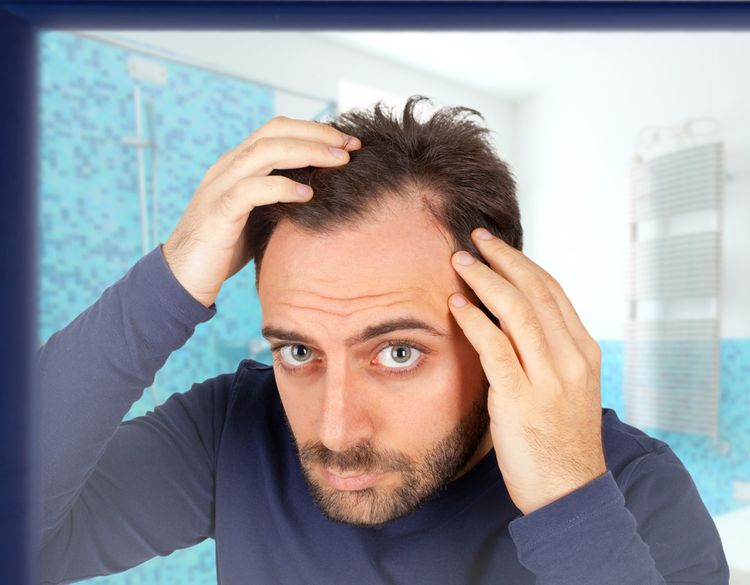
Anyone who’s experienced thinning or loss of hair knows just how traumatizing it can be. It’s a problem that many of us would like to solve, evidenced by the big bucks being made by drug manufacturers and transplant specialists.
Stressing out over appearance is what many of us do best, especially in today’s no-off-switch digital world.
While thinning hair may be unnoticeable at first, you may eventually spot thinning or bald patches, large amounts of hair in the shower, on your brush or comb, or on your pillow.
Most people experience this process gradually, however some may see hair come out in larger clumps or at a more rapid rate. All of this only adds to the stress and anxiety of the situation, creating a vicious cycle that’s challenging to break.
Getting this problem under control and ideally reversed will require addressing the root causes, while at the same time employing stop-gap natural relief measures. In order to get the ball in motion, we need to first know what we’re dealing with.
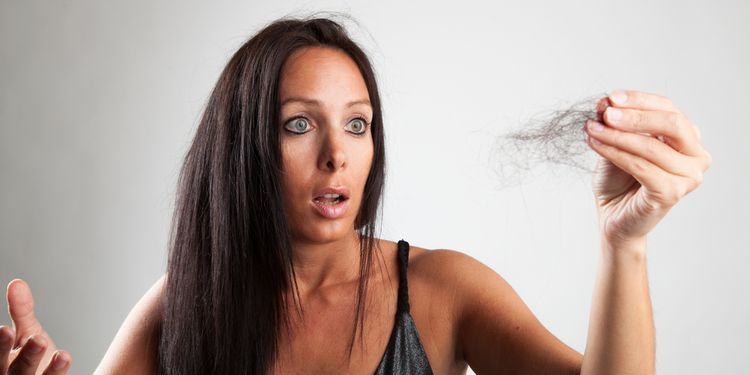
What Exactly is Hair Loss?
The average person loses 50-100 hairs per day. If you’re losing more you may be experiencing hair loss.2
Hair loss is a condition that affects approximately 35 million men and 21 million women in the United States each year.
Hair loss can be described by many terms including: thinning hair, balding, male pattern baldness, hair fall, falling hair, receding hairline, and alopecia. These terms all refer to the same physical process but may have entirely different root causes.
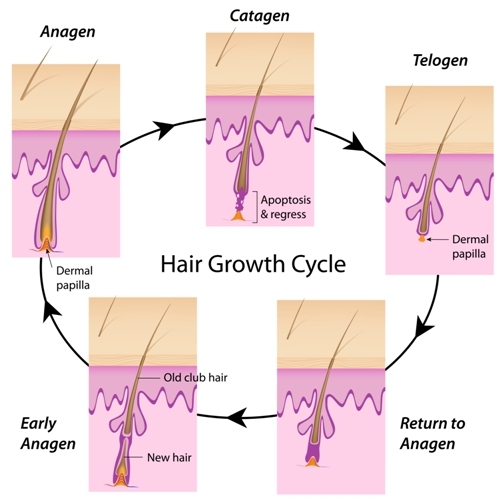
How Does Hair Loss Occur?
Hair growth, and subsequent loss, is a complex process that involves several steps and that is affected by variables such as hormones, nutrition, inflammation, stress and toxin levels. The hair growth cycle has four continuous stages:
- Anagen (Growing Phase): This phase lasts two to four years and determines the length of hair.
- Catagen (Transition Phase): This is where the hair follicle shrinks and detaches from the dermal papilla.
- Telogen (Resting Phase): The resting phase of hair growth lasts about three months before new growth begins again.
- Exogen (New Hair Phase): In this phase, old hair sheds while new growth occurs.
The aforementioned variables can halt this natural process by prolonging the telogen (telogen effluvium) or anagen (anagen effluvium) phase of hair growth, resulting in slower or no hair regrowth once fall-out has occurred.
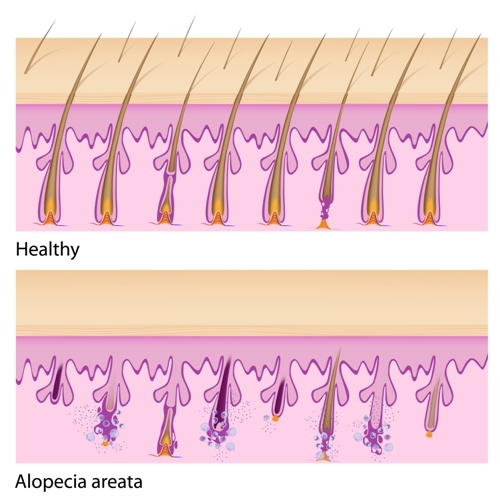
Types of Hair Loss
The main types of hair loss include:
Alopecia
Alopecia is an autoimmune condition that affects approximately two percent of the U.S. population.3
It occurs when your immune system, which is designed to protect you from foreign invaders, mistakenly attacks your hair follicles as though they are a threat. This type of hair loss often occurs following a traumatic life event, chronic illness or pregnancy.
People at the highest risk for developing alopecia are those with an existing inflammatory or autoimmune condition such as asthma, allergies, diabetes, dermatitis, hypothyroid or vitiligo, as well as those who have relatives who have been diagnosed with these types of conditions.
Alopecia presents in different ways, depending on the severity of the autoimmune condition:
Alopecia Areata: Occurs when hair falls from the scalp, leaving peach-colored, circular patches on the head. Hair on the face, arms and legs may also be affected.
Alopecia Totalis: Initially patchy hair loss eventually leads to complete loss of head hair.
Alopecia Universalis: Alopecia universalis is a gradual but complete loss of all head and body hair.
Telogen Effluvium
Hair growth is a cyclical process that occurs in phases. Hair will grow for a few years, rest for a few months, shed and regrow again.
The telogen phase of hair growth is the resting phase. During this time, hair does not grow but stays attached to the follicle. Five to fifteen percent of hair is normally in the telogen phase.
In cases of telogen effluvium, severe stress or a traumatic life event causes this resting phase to begin prematurely, resulting in hair loss. The most common symptom of telogen effluvium is diffuse hair loss, although certain parts of the scalp may be more noticeably affected than others.
Telogen effluvium can be triggered as late as six months after a stressful event, since biochemical changes can be delayed. Common triggers include pregnancy, weaning after nursing, job loss, divorce, death of a loved one, moving and chronic illness. This type of hair loss rarely lasts longer than six months.
Anagen Effluvium

The anagen phase of hair growth is the first cycle. During this phase the hair shaft increases in length for a period of two to four years.
Anagen effluvium is a sudden and rapid loss of hair usually beginning two to four weeks after the trigger event. This type of hair loss is most commonly associated with:
- Chemotherapy: Chemotherapy targets all rapidly-dividing cells, both cancerous and healthy. Hair follicles are some of the fastest-growing cells in your body.
- Radiation: Hair follicles are sensitive to radiation, often resulting in hair loss.
- Severe Malnutrition: Eating disorders, malabsorption, poor diet, GI infection and anemia can all contribute to hair loss, as your body is not getting the nutrients it needs to sustain hair growth.
- Prescription Medications: Antidepressants, gout medications, beta-blockers, ACE inhibitors, hormone replacement therapy, anti-inflammatories, blood thinners, contraceptives and anti-seizure medications have all been associated with hair loss.
Male Pattern Baldness

This type of hair loss is caused by shrinking hair follicles, which result in the gradual thinning of hair. Eventually, the follicle will not regrow new hair.
If you’re a man with male pattern baldness, you may notice a receding hairline or an expanding bald patch at the crown of your head. A major factor in male pattern baldness is androgenic alopecia (AGA).
AGA is attributed to the androgen hormones, which are responsible for sexual function and reproduction. The most common causes of male pattern baldness are advanced age, genetic tendency and excess production of dihydrotestosterone (DHT).4
Female Pattern Baldness
This is similar to male pattern baldness in that the shrinking follicles lead to gradual hair thinning. If you’re a woman with female pattern baldness, you may notice a widening of your center part, while your hairline remains the same.
FPB usually begins around age 30 and can be the result of aging, genetic susceptibility or androgens. This type of hair loss rarely progresses to near or complete baldness.5

Root Causes of Hair Loss
The root causes of hair loss are complex and often involve multiple processes. Inflammation, autoimmunity, hormone imbalance and nutrient deficiency from malabsorption or diet are the primary underlying mechanisms of hair loss.
Inflammation: Any process in the body that promotes inflammation can ultimately result in hair loss. Common inflammatory processes are infections, acute injury or trauma, high stress levels, excessive exercise and cardiometabolic syndrome. Autoimmunity is also an inflammatory mediated process. Hashimoto’s thyroiditis, Graves’ Disease, Celiac, Lupus, Psoriasis and Dermatitis are inflammatory or AI conditions commonly associated with hair loss.
Nutrient Deficiency and Diet: A nutrient-depleted diet that is low in protein, healthy fats, fruits and vegetables, and is high in processed foods, sugars, inflammatory fats and chemical additives creates the perfect storm for hair loss to take place. Appropriate levels of protein, essential fatty acids, vitamins and minerals are required for hair growth, and overt nutrient deficiency, iron deficiency anemia and anorexia are common causes of hair loss.
Hormone Imbalance: Altered thyroid, adrenal and sex hormones can all result in hair loss. Conditions associated with hormone related hair loss include PCOS, trichotillomania, hypothyroidism, hyperthyroidism and high/low androgens.

Root Cause of Hair Loss: Nutrient Deficiency and Diet
Eating disorders, malabsorption and poor diet can cause nutrient deficiencies that interfere with healthy hair growth.
Anorexia nervosa and similar eating disorders affect people across the globe who feel the pressure to look a certain way, or feel the need to take control of their lives in this one particular area.
Severe malnutrition and overwhelming stress on the body and mind can most certainly lead to hair loss. The extreme lack of protein, vitamins and minerals can result in brittle hair or hair loss, as the body diverts the few nutrients it receives to more important life-sustaining functions.
Poor production of stomach acid, HCl, can result in nutrient deficiencies of zinc, iron, folic acid and protein, which are all vital to hair growth.
A Standard American Diet (SAD) / processed foods diet that is high in inflammatory fats and sugars, while low in protein and plant based nutrients can result in low levels of zinc, B6, B12, biotin, folic acid, iron and essential fatty acids that are vital components of hair growth. Excessive vitamin A can also cause hair loss.
Autoimmune conditions such as Celiac Disease, Crohn’s and Ulcerative Colitis, as well as GI infections that perpetuate inflammation and leaky gut can also produce nutrient malabsorption.

Root Cause of Hair Loss: Celiac Disease
Celiac disease is an autoimmune condition characterized by the inability to digest gluten, the protein found in grains such as wheat, spelt, kamut, triticale, barley and rye.
In response to gluten exposure, the immune system produces antibodies that attack the lining of the small intestine, resulting in inflammation and malabsorption.
As this process continues, the chronic stress can lead to telogen effluvium. Even if you don’t have Celiac disease, consumption of gluten may be detrimental to the health of your hair. Gluten intolerance and gluten sensitivity, while not as severe as Celiac disease, are still inflammatory processes that can produce hair loss.
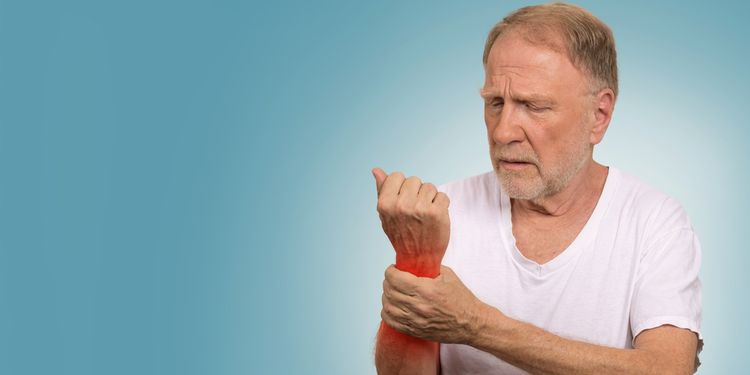
Root Cause of Hair Loss: Lupus
Systemic Lupus Erythematosus (SLE), or Lupus, is an autoimmune condition that attacks many of the body tissues, such as skin, joints, brain, heart, kidneys, lungs and blood cells.
Lupus related hair loss occurs most commonly when the immune system attacks the hair follicles, but stress, autoimmune (AI) flares and the side effects of prescription medications can also be contributing factors.
Cutaneous Lupus Erythematosus is one variation of the condition, and is characterized by rashes and lesions that appear on areas of the skin that have been exposed to ultraviolet light. The facial pattern is often shaped like a butterfly and is a hallmark characteristic of Lupus. Scarring of the scalp can also occur as a result of lupus and contribute to hair loss.
Stress and Autoimmune Flares: Autoimmune disease places the body under biochemical stress, which can lead to telogen effluvium and fragile hair, as nutrients are diverted to other areas of the body.
Prescription Medications: Prednisone and other immune-suppressing drugs may contribute to hair loss by altering metabolic pathways and depleting nutrients.
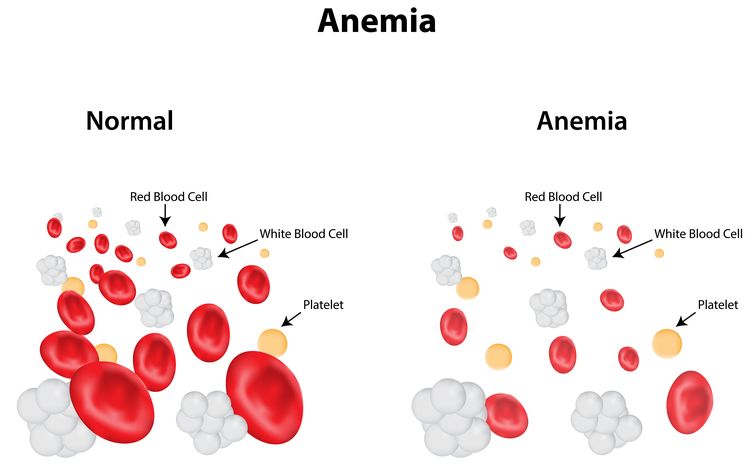
Root Cause of Hair Loss: Anemia and Iron Deficiency
Iron is an essential nutrient to many biological processes, especially the maintenance of healthy skin, hair and nails.
Iron deficiency anemia (IDA) can cause symptoms such as fatigue, weakness, cold hands and feet, shortness of breath, headache, restless legs, dizziness, cravings for non-food items (pica) and hair loss. IDA can be triggered by lack of dietary iron, malabsorption or pregnancy. Frank iron deficiency without anemia can also cause hair loss.
Ferritin is the storage form of iron. Having appropriate levels ensures a proper anagen phase of hair growth, which will enable the hair to reach its full length. When your body needs more iron to support vital functions it takes it from places such as the hair bulb, where ferritin is stored, to give it to the heart and other important tissues.15
Chronic illness sends your body into survival mode, diverting oxygen toward vital functions and away from non-vital functions, such as hair growth. Chronic inflammatory and autoimmune conditions are often associated with iron deficiency and overt anemia. Bleeding disorders and women with heavy menstrual periods are also at risk for anemia.
Adequate levels of stomach acid, HCl, are required for your body to absorb iron. If you are deficient in HCl you may not be absorbing the dietary or supplemental iron that you are consuming. The expression “you are what you eat” ought to be changed to “you are what you assimilate.”

Root Cause of Hair Loss: Hormone Imbalance
Your body must maintain a delicate hormonal balance in order for it to function optimally, let alone adequately. Imbalanced levels of estrogen, testosterone, cortisol, thyroid hormone, or insulin can all manifest as hair loss. One hormone falling out of balance can easily result in a ripple effect felt across various other hormones.
Conditions such as PCOS, menopause, and estrogen dominance, as well as rapid blood sugar swings, all produce a metabolic state where hair loss can occur as a symptom of the existing hormone imbalance.
Polycystic ovarian syndrome (PCOS) is a hormonal condition that affects anywhere from 1 in 10 to 1 in 20 women in the U.S., according to Dr. Sara Gottfried, MD. It’s characterized by elevated male androgen hormones, insulin resistance and altered ovarian function.10
High androgen levels can disrupt the balance of estrogen, progesterone and testosterone in the body, which can subsequently result in hair loss.
Estrogen balance is key to hair health, as it extends the growth phase. This is why many pregnant women with elevated estrogen levels have thick, beautiful hair.
Low estrogen levels, such as those observed in women going through menopause, can result in higher levels of progesterone and testosterone relative to estrogen.
Conversely, estrogen dominance is characterized by estrogen levels that are elevated, relative to progesterone. Estrogen dominance can be caused by environmental factors such as medications, food additives, plastics, and chemicals, as well as excess body fat resulting in the conversion of androgens to estrogens by aromatization. No matter the factor though, the systemic effects on your hormones can result in hair loss.

Just as estrogen balance is vital to women’s hair growth, Testosterone balance is equally vital to that of men’s. As testosterone levels decrease during andropause, men often notice an uptick in hair loss.
High levels of testosterone can result in conversion to DHT, a highly active metabolite of testosterone that may contribute to hair loss. Conversion of testosterone to DHT can occur to both men and women.
Imbalances in one part of the hormonal system can adversely impact others. Cortisol affects production of almost all other hormones, including estrogen, progesterone, testosterone, insulin, and thyroid hormone.
Acutely elevated cortisol can cause an increase in any or all of these hormones, resulting in telogen effluvium or increased DHT activity from high androgens, estrogens or thyroid hormone.
Chronically elevated cortisol can eventually result in adrenal fatigue, resulting in a reduced metabolic state that is capable of manifesting in the form of hair loss.
Similar to the wide reaching effects of cortisol is insulin. Clinical pharmacist and known thyroid expert Dr. Isabella Wentz, Pharm.D., FASCP explains that rapid fluctuations in blood sugar seen in reactive hypoglycemia and insulin resistance can affect the thyroid, promoting conversion of T4 to reverse T3 (RT3) instead of the metabolically active form, T3.16
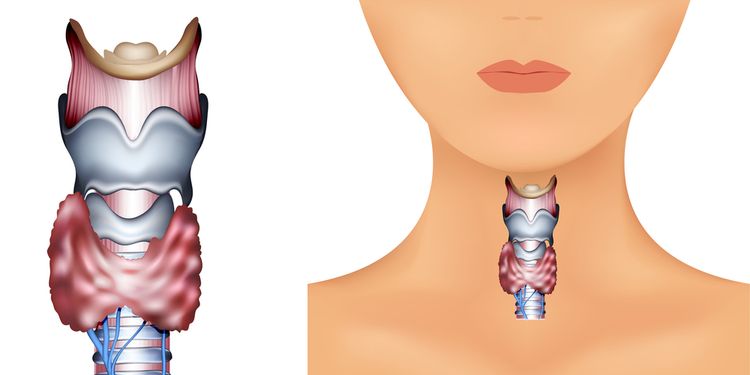
Root Cause of Hair Loss: Thyroid Dysfunction
Hypothyroidism, or low thyroid function, is a common cause of hair loss in both women and men. Hypothyroidism can stem from iodine deficiency, lack of thyroid stimulating hormone, autoimmunity, as well as other factors.
Ultimately however, not enough active thyroid hormone (T3) is produced. Dr. Sara Gottfried explains that when your body is experiencing elevated stress due to fluctuating thyroid levels, it diverts nutrients from non-essential metabolic processes to those that are vital for survival. In this case, it will redirect resources away from hair growth and toward stabilizing your hormones.10
The autoimmune form of hypothyroidism, Hashimoto’s Thyroiditis, is the most common cause of hypothyroidism, as well as the most common autoimmune disease in the United States.

Chris Kresser, LAc, explains, “What the vast majority of hypothyroidism patients need to understand is that they don’t have a problem with their thyroid; they have a problem with their immune system attacking their thyroid.”11
The immune system can attack various areas of the thyroid gland, causing tissue destruction that results in decreased production of thyroid hormone, as well as antibodies.
In order for hypothyroidism and Hashimoto’s to be managed or resolved, the underlying autoimmune processes need to be addressed.
Hyperthyroidism, or high thyroid function, is a less common cause of hair loss, characterized by increased thyroid function and increased metabolism.
This elevated metabolism can trigger telogen effluvium, causing an increased amount of hair to enter this resting phase of hair growth.
Grave’s Disease is the autoimmune form of hyperthyroidism, where the antibodies produced result in excess thyroid hormone production.

Root Cause of Hair Loss: Scalp Psoriasis
Psoriasis is an autoimmune condition that occurs when the immune system attacks the skin and/or joints, resulting in red, scaly lesions. This can occur on any area of the skin, including the scalp.
Symptoms of scalp psoriasis include thick, reddish patches that can itch and bleed with a scaly dandruff-like shedding of silvery flakes. Hair loss can result from the autoimmune reaction itself, scratching or picking the affected area, or even medications associated with treating the problem.
Flare-ups can occur as the result of stress, exposure to cold and dry air, alcohol consumption, sunburn, infections, injury to the scalp, and certain medications, which are all capable of exacerbating the condition.
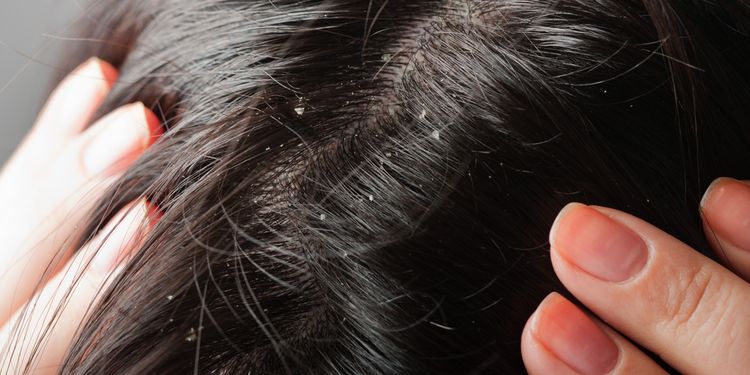
Root Cause of Hair Loss: Seborrheic Dermatitis
Seborrheic dermatitis (SD) is a chronic skin condition that presents similarly to scalp psoriasis, eczema and allergic reactions. Inflammation, along with hormone fluctuations, are two of the primary causes of SD.
Abnormal increases in sebum secretion from the hair follicles can produce inflammation and sometimes a fungal infection that further promotes inflammation.
Cradle cap is seborrheic dermatitis that occurs in infants, since there is a transfer of androgens via the mother’s placenta to the baby.
In all cases of SD, greasy and scaly patches of itchy red skin can develop on the scalp, and hair loss can result due to the inflammation itself, hormonal changes, scratching, and certain treatments.

Root Cause of Hair Loss: Trichotillomania
Trichotillomania (TTM) is an anxiety disorder characterized by an irresistible urge to yank, tug, and pull out hair on the head, eyebrows, and/or eyelashes.
For people suffering from this problem, the urge to pull out hair is obsessive and can’t be resisted (similar to OCD), and great relief is derived from the action.17
This anxiety is often caused by imbalanced neurotransmitters and hormones.
TTM tends to run in families and those afflicted often have genetic polymorphisms (SNPs) or gene variations that may predispose them to this type of condition.
Trichotillomania most commonly develops during one’s early teen years as a result of hormonal changes, however a traumatic event can also trigger this condition, resulting in an onset as early as toddler-aged.17

Natural Relief from Hair Loss
According to Dr. Andrew Weil, M.D., certain dietary changes may slow or even reverse hair loss. He recommends eating wild Alaskan salmon, sardines, herring or mackerel two to three times per week.8
If you’re not much of a fish eater, he recommends that you consume two tablespoons of freshly-ground flax seeds or walnuts. These foods are rich in omega-3 fatty acids, which have been shown to decrease inflammation, reduce hair loss in women and lubricate follicles to add brightness and elasticity to the hair.8 Supplemental GLA and fish, krill or cod liver oil are good options as well.
Adding biotin to your dietary supplement regimen can help to reverse the effects of hair loss related to biotin deficiency, which is often a result of malabsorption or high stress levels.9
Switch to organic hair-care products. The synthetic chemicals in conventional shampoo, conditioner and other styling products can not only be damaging to your scalp, but to your overall health.16
Avoid gluten and other inflammatory foods. A diet high in plant-based nutrients, clean and properly raised animal protein, as well as healthy fats can promote hair growth.16
Balancing blood sugar and reducing stress can help to preserve nutrient levels in the body.16
Supplementing with betaine HCl and digestive enzymes can help you absorb more of the nutrients necessary for hair growth.
As mentioned right at the top, the key to stopping hair loss, and even restoring your hair, is to take immediate action with the natural relief options we’ve mentioned here, while simultaneously beginning to address the true underlying causes of your problem.
The appropriate testing can tell you where to focus your energy first, but often times it takes effort in the areas of immune, digestive and hormonal health in order to see hair regrowth, as well as overall health improvement.
